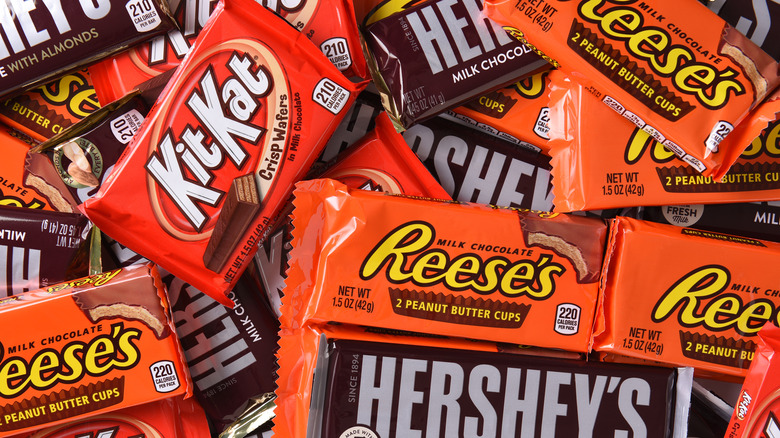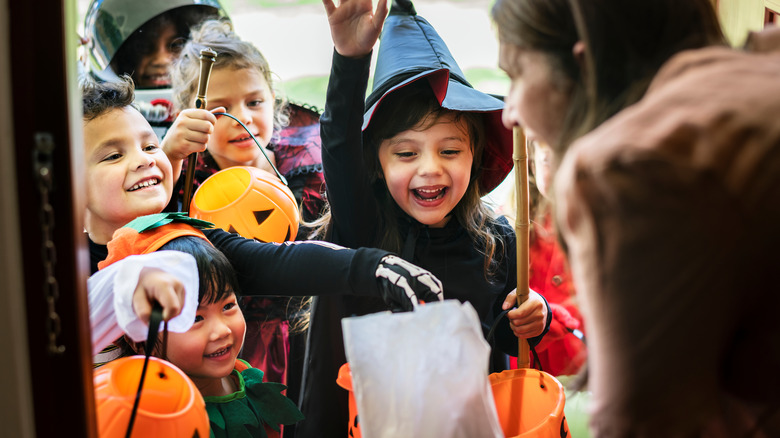How Inflation Is Expected To Impact Halloween Candy
As Halloween creeps closer, bags of assorted candy has hit grocery store shelves. According to an Instacart survey, most shoppers tend to wait until the last minute to buy candy — as much as 43% of total candy purchases for the month occur in the week before Halloween. However, if you see a sale before the holiday, you may not want to wait to snag a bag.
Trick-or-treating became a tradition sometime between the 1930s and 1940s, according to History, but candy wasn't always the typical treat. Kids dressed in costumes would receive anything ranging from cookies to fruit to toys from their friendly neighbors. By the 1950s, candy companies began marketing their sweets specifically for the holiday, and giving out candy became the norm by the 1970s. That house that usually gives out full-size candy bars may be a trick-or-treating favorite, but don't be surprised if they cut back this year and opt for fun-sized sweets instead. The cost of food has continued to rise thanks to supply shortages and continuous inflation, and even candy can't escape its impact.
Candy could cost more this year
Customers could expect a trick when buying treats this year — prices for candy could cost as much as 34% more than they did last year, according to Fox Business. The Hershey Company (which produces popular Halloween candies like Kit Kats, Reese's Peanut Butter Cups, and Almond Joys) reportedly increased their product prices in order to keep up with higher material costs.
In addition to higher prices, customers could also have a harder time finding candy this year. The Washington Times reports that supply chain disruptions due to the pandemic and the Russia-Ukraine war have created problems when producing candy. Hershey will reportedly not be able to produce enough candy to keep up with typical Halloween demand. Despite the cost increases, Fox Business reports that customers will still buy as much candy as they typically do — the National Retail Federation hasn't seen a dip in customer spending, as consumers prioritize enjoying the holiday experience. Spending on candy alone is expected to total nearly $3.1 billion this year.

